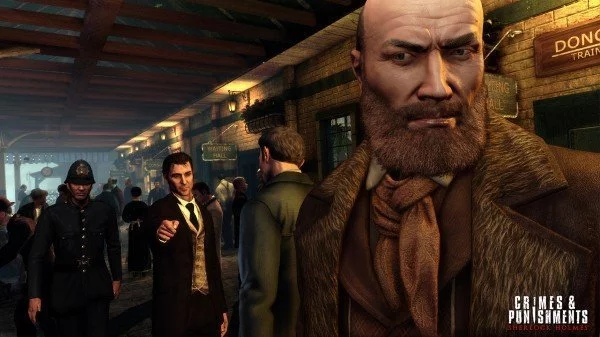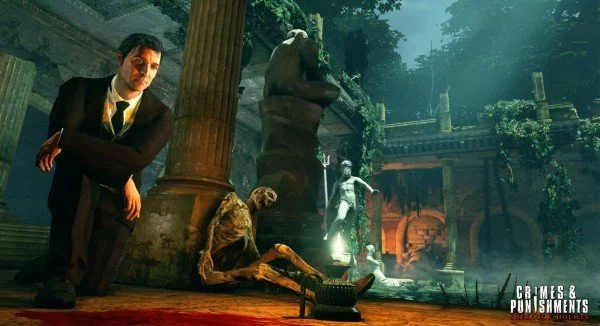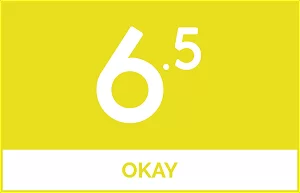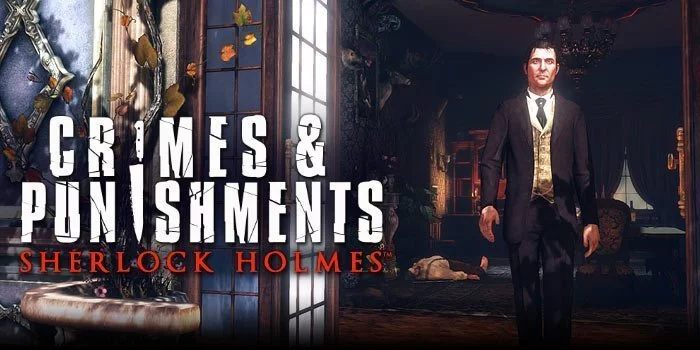Sherlock Holmes has been in vogue the past few years. Thanks to the Robert Downey Jr. films, Benedict Cumberpatch’s television show and the American series Elementary, the world’s greatest detective has re-entered pop culture’s lexicon in a big way. It should come as no surprise then that there’s a video game series based on Sherlock’s literary adventures.
Frogwares’ Sherlock Holmes adventure series has been around since 2002, with the latest in the franchise subtitled Crimes & Punishments. This is the first in the series to use the Unreal engine and it makes an enormous difference. Older games in the series — Jack the Ripper especially — were hideously ugly. Not that it really mattered for the style of the games, but it’s nice to play a Sherlock game that doesn’t make your eyes bleed.
That being said, every single character model in the game is just a little creepy. The uncanny valley hits and it hits hard. I became accustomed to the parade of freaks eventually, but initially I was really put off. Ok, it’s not that bad… but it’s noticeable. It frequently took me out of the moment and for a game that spends much of its time interrogating other characters, models need to be up to snuff. Elsewhere, the graphics fare much better. Environments, textures, lighting and animations are great. Victorian London leaps gorgeously from the screen so it’s all the more jarring when the uncanny valley rears its (literal) ugly head.

Each area within the cases is self contained and travelling between them is done via a map screen. Once a destination has been selected a (somewhat lengthy) loading screen featuring Holmes and Watson in their carriage plays every time. It’d be nice if each area was connected by an explorable open world, but it isn’t. It’s not a major issue and never affects the game in any meaningful way, it’d just be nice to explore rather that stare at Sherlock’s ugly mug reading Dostoyevsky’s Crime and Punishment for the fortieth time.
Sherlock Holmes: Crimes & Punishments is a fairly standard adventure game. Across the six cases, Sherlock investigates crime scenes, interrogates suspects, inspects evidence and performs autopsies in either third or first person. It’s pretty pedestrian adventure game fare, somewhat reminiscent of L.A. Noire. Once a clue has been uncovered it’s placed in the deduction space and by combining two clues Sherlock is able to make a deduction. Make enough connections and Sherlock is able to form a conclusion. Each case has multiple conclusions with only one of them being correct, though you’re able to check if you made the correct choice and redo it if you were wrong.
The cases are interesting and attention grabbing, as are the cast of characters that cross paths with Holmes and Watson, but actually solving each of them is a little too easy. There’s really no way to fail provided you collect every clue and talk to every person. It’s more a case of watching the case unravel before you rather than actually needing to figure anything out. For a game about being a detective that’s a bit of a cardinal sin. That’s not to say you don’t have to do some thinking, but the game really does most of the heavy lifting.

Crimes & Punishments is surprisingly adept at introducing new mechanics that are either used once and never again or introduced early and used so rarely that they’re all but forgotten. Sherlock Vision and Sherlock Imagination are two such mechanics. Sherlock Vision allows the detective to see the world more clearly than other people and use his powers of deduction and reasoning to focus in on clues and elements that may otherwise be overlooked. It’s used infrequently and on more than one occasion when I was stuck I realised after much frustration that I simply needed to activate it to proceed. Sherlock Imagination is used even more infrequently (around 3 or 4 times in the total 12 hours) and lets Sherlock use his vast intellect to recreate scenes in his mind. Not only is it a bit of a stretch to believe, it’s basically a deus ex machina for whatever case currently being investigated.
All of that being said, I really enjoyed my time with Crimes & Punishments. Each individual case is intriguing as is the overarching narrative. Holmes himself is brilliantly characterised coming across with just the right tone. Unfortunately, the same can’t be said of Watson who basically takes on the role of wet blanket for the duration. The entire voice cast performs admirably although a couple of dodgy Aussie accents threaten to derail everything a couple of times. On that, look out for both Australian characters as apparently we a nation of swindlers and criminals… so, thanks Frogwares.
For some relaxing, laid back adventure gaming you can’t go wrong with Sherlock Holmes: Crimes & Punishments. Although I still haven’t figured out just exactly what is going on with Sherlock’s telescope. You’ll know when you see it.
Sherlock Holmes: Crimes & Punishments
 |
The good
|
The bad
|
Want to know more about our scoring scale?
This article may contain affiliate links, meaning we could earn a small commission if you click-through and make a purchase. Stevivor is an independent outlet and our journalism is in no way influenced by any advertiser or commercial initiative.
























